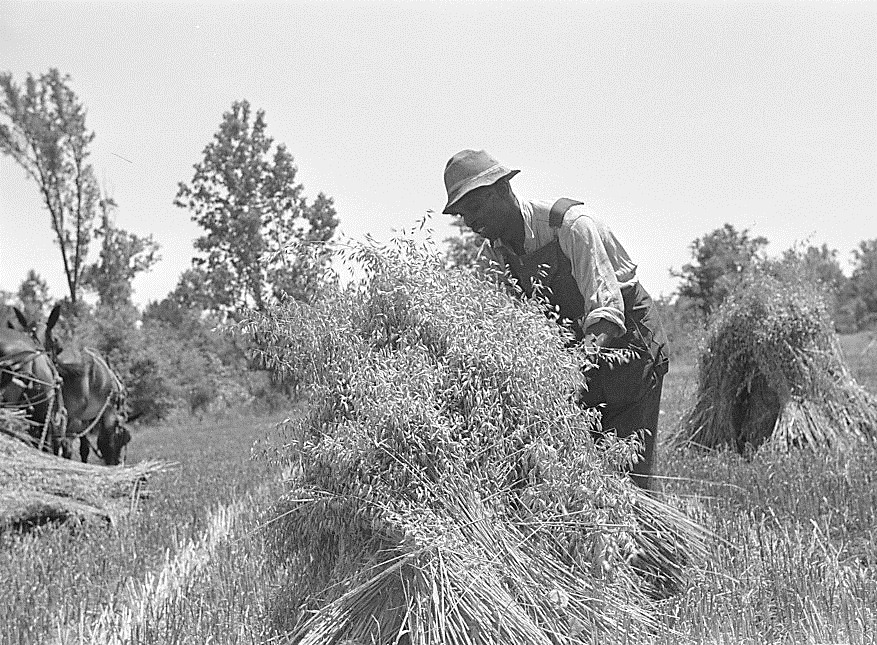Stories and paintings that relate unpleasant interpretations of contemporary and future existence add voice and visibility to a diverse literature of the land. Consolidation of family farms in recent decades into larger corporate enterprises and the commodification of grain—William Cronon’s “transmutation of one of humanity’s oldest foods,” warrant high regard for stewardship of the land. Reinvigoration of Americans’ deep-seeded social memory and cultural capacity can guide landowners and public officials who contend with environmental challenges and finite production acreage. As elsewhere across the country today, those who harvest crops in the Palouse Hills of my youth have reduced water and wind erosion and increased crop yields. When Conrad Blumenschein told me about leaving Russia for America just before the outbreak of World War I, ten families lived on a dozen farms of about 320 acres each scattered along the road between my hometown of Endicott and the Palouse River some seven miles to the north. (The other two landowners lived in town.) Numbering some fifty people, most attended one of two Lutheran churches in the area—the Missouri Synod in the country, and the Ohio in Endicott, and two country schools enrolled the area’s children through the eighth grade. Many of these families were related to each other, and regularly gathered for summer harvest labors, fall butchering bees, and various ceremonies and celebrations.
A half-century later in the 1960s when I began interviewing first generation immigrant elders like Mr. Blumenschein, the number of farms had fallen to nine with some consolidation of property holdings among the seven families of thirty-two individuals who remained. The size of area farms had increased to an average of 550 acres, and both country schools had consolidated with the larger town district that offered instruction through grade twelve. The price of a bushel of wheat rarely rose to $2 from 1960 to 1973, when a controversial U. S. trade deal to supply the Soviet Union with grain boosted prices to as much as $6.25. The long sought optimism felt by growers ushered in a year of equipment upgrades and land purchases encouraged by the Department of Agriculture’s “get big or get out” slogan. Favorable Russian harvests the following year coupled with reduced federal subsidies contributed to America’s 1970s “farm crisis” followed by years of economic stagnation in the countryside.
Another fifty years has since passed, and today the same area of several thousand acres that had been home to about fifty souls a century ago is comprised of just eight farms. All but one are part of larger operations tended by families who also own or lease other cropland in the area. (The average Palouse Country farm size in 2018 was 1100 acres.) Only four households are located on the same seven-mile stretch that supported ten families a century ago, and these are comprised of just five adults whose grown children live elsewhere. In between these habitations today are found the lonely clusters of dying locust trees, broken fences, and rusted equipment of abandoned farmsteads. The trend has brought debilitating effects on rural communities with closures of local stores, banks, and public services.
Nostalgia for some halcyon past contributes to the popularity of rural art, but should be tempered with consideration of what has been lost and what has been gained. These contrasting themes are considerably explored in contemporary photographic art and are the special interest of Pacific Northwesterner John Clement and Canadian John Malone. Ambivalent considerations about such trends are expressed in “Palouse” by Lewiston, Idaho, poet William Johnson:
There is always an empty house
by the road at the edge of town,
its windows whiskered with lilac
and letting in rain. Nearby,
a barn drags itself home,
and in May, daffodils trim the yard
against an ocean of wheat
that rolls in on a slow inexorable tide.
Trends in the substantial depopulation of the countryside are found throughout the nation, even as affordability of houses in small towns has helped keep some inhabited with newcomers to sustain local schools, churches, and clubs. Shrinking numbers of farmers remain as vital carriers of intimate knowledge about the land and growing conditions, and of practical skills that keep bringing forth the crops. The broader impact on rural life and labor is consistent with studies that show in 1840s pre-industrial America a farmer could produce an acre of wheat yielding about twenty bushels. This required approximately sixty hours of annual work using primitive implements like a single-shear plow and scythe. A single day’s harvest by an able-bodied reaper on as much as an acre could yield up to thirty bushels of cut grain. By 1900 a farmer equipped with horse-pulled gang plow, harrow, and drill produced a similar yield on one acre in about ten hours. An experienced crew operating a mechanical reaper and steam-powered thresher at that time could cut about forty-five acres a day for some 1,200 bushels (31 tons) of grain.


























